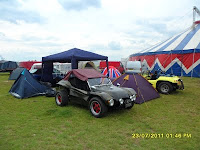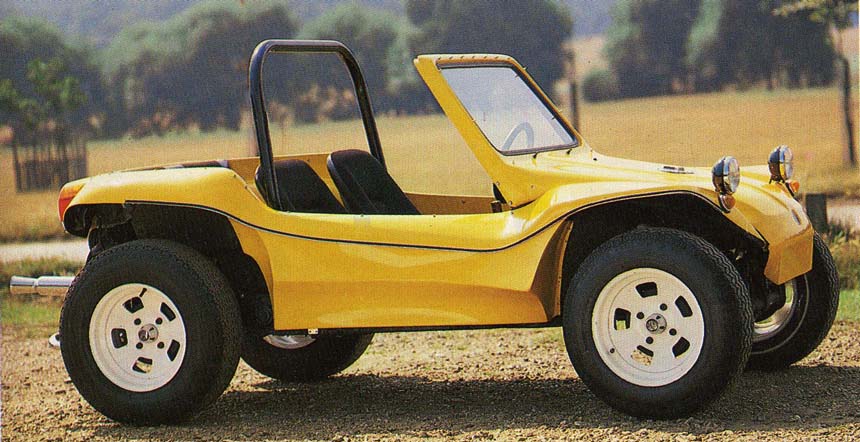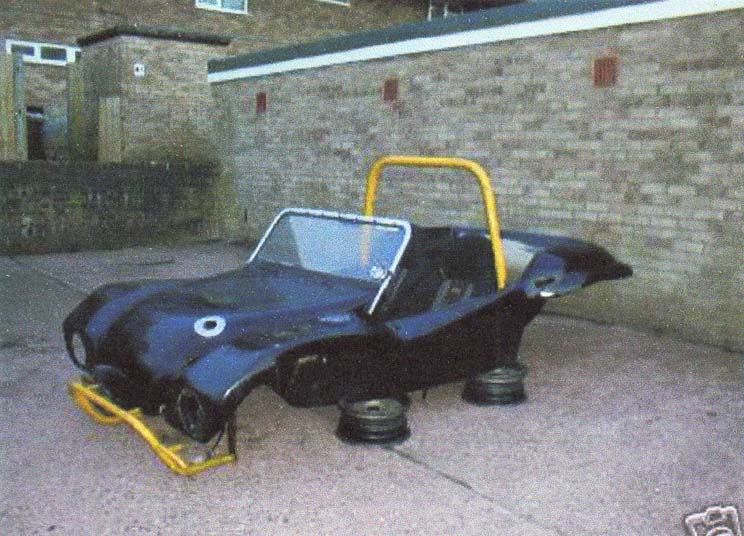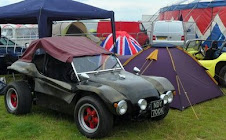 21st July 2011
21st July 2011I got my cylinder head off yesterday that had the broken spring in it. The spring in two pieces along with the valve are shown in the picture opposite. The spring had sheered right through two coils down and the surfaces matched exactly. This is a fairly major failure in this part . I had thought I had used second hand heads but in fact these heads where 040 heads I had bought some years earlier for my engine. I decided to go to
GSF and get a new inlet valve and luckily these where standard 35.6mm valve heads with an 8mm stem and strangely
GSF had them in stock. It is a mystery to me what
GSF stocks as they always only seem to have half of the parts I require for example yesterday morning i spend £68.00 on parts a Valve Compression tool and some valve springs.
GSF could have had all of this but instead only had £10.00 for two collets and an inlet Valve . I have to wonder why this is but am happy that my local branch is expanding and they will have more stock room.
The Valve compression tool I bought was a bench mounted tool.

which is very simple to use. You simply place the head on the base with the valves in and the arm runs along a track to alter its position to put a valve in in turn. with the spring and spring retainer on the valve the compression tool compresses the spring so that the two collets can be inserted. This was very straight forward and I was very impressed with it as a tool that actually does what it should do for a change.
I decided as I had the tool I would clean up the other valves in the heads before putting the head back on this involved removing each of the collets from the other valves and taking out the valve and cleaning it down with carburetor cleaner and a wire brush. The valves where then re fitted to the head one by one until the head was re assembled again . The head was then refitted to the engine. I new I would need to visit
GSF again as I needed a new set of carburetor and exhaust gaskets. With the
GSF High quality gasket set in hand I was waiting for a UPS delivery all morning to deliver my springs and tools. Sadly this was wasting my time so I decided to paint some of the tin wear back up with black to refresh it a little.
I got a phone call from CoolAir VW a little while later as I had called as was getting worried as nothing had arrived. They told me that nothing had been shipped out to me there had been a problem with an email not being sent and although apologetic I was told I would and could not have my parts today. This meant I could not get the car back together for bugJam.

I was so cross about this it started me thinking . I had an old valve spring compressor that was made by Laser this would not fit my beetle heads and without the proper equipment arriving I decided to try some customization of this item to see

if I could do anything with it. You can see I used my angle grinder to remove to nicks from the very front of the tool so that it would not interfere with the lip on the cylinder head. I then filed it so that it had no rough burrs and was smooth and kind to the soft aluminum head. I found that the scissor action of the clamp was quite difficult yo use. I also found that when you had it clamped onto the head that you could not increase the pressure further by tightening the screw as t

he bottom of the screw just slid of the head of the valve. This was rather disappointing, however I soon found that if I tightened up the thread hard . I could not close the cramp but I could use a rubber mallet to hit the leaver to make it force the spring to compress. This was a good find

as it pulled the spring up tights so that the collets could be removed. The image right shows the top of the tool and how close it is to the edge of the head even with the section removed from the jaws of the compression device. Without this removed the device could not compress the valve enough to allow the collets to be removed. This was obviously a flaw in the design. The collets were then removed and the apparatus was removed to allow the spring to be released. I took the s

pring and cleaned it up with a wire brush and then wd40. I then placed the new valve old spring and new collets into the head with the same process only i had to balance the device on the compressor before i could compress it this turned out to be considerable easier. The picture right shows the valve inserted in the head and the head pushed onto the cylinder heads. This was then bolted back on turning up the nuts in a diagonal pattern so that it pulled the head up evenly. The newly painted tin ware was then placed under the fan housing and then screwed down tightly. I then inserted the Alternator with the fan still on the back into the housing and strapped it down with the strap before doing up the tin ware screws in this way i could ensure

that the fan spun without hitting the housing. I found i needed to pull it forward before doing up the strap to achieve this. When I had the alternator bolted in then I did up the tin ware screws. I then put the carburetors back on using new gaskets . I put the cross bar in whilst the carbs was loose this gave just enough room to get it in so they bolted up with it in place. Whilst I had the engine in bits i Changed my Distributor back to a VAC model and connected up the engine electrics and fuel eager to see if this had changed anything.
My Buggy Engine running .
The initial run was much smoother and the car ran better. I took the car out for a run
The initial RunI returned finding that it would not idle when it was hot. I readjusted the idle screws to get it to idle and left the car in its garage to cool down for the evening. I was still very cross with CoolAir Vw they did appologise but I was very upset that they new I needed my parts to get to Bug Jam and there had obviously been a failure in their systems.
 22nd Nov 2011.
22nd Nov 2011. the fuel pump with a new fuel pump regulator and pressure gauge in an attempt to see if there was a fueling issue that was preventing fuel reaching the twin carburetors. The fuel pressure was correct and providing 2.5-3 psi on the gauge. I pressure tested the heads and they all came out the same over 980 lbs on each cylinder suggesting I had good compression.
the fuel pump with a new fuel pump regulator and pressure gauge in an attempt to see if there was a fueling issue that was preventing fuel reaching the twin carburetors. The fuel pressure was correct and providing 2.5-3 psi on the gauge. I pressure tested the heads and they all came out the same over 980 lbs on each cylinder suggesting I had good compression.

































































